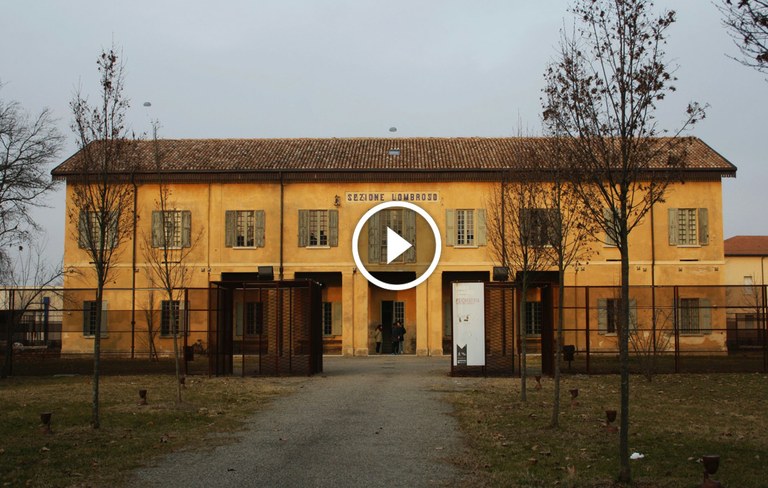Psychiatry History Museum
Address and contacts
Via Amendola, 2 - 42122 Reggio Emilia
Lombroso Pavilion - Pedestrian area of San Lazzaro Campus 0039 0522 456816
![]() musei@comune.re.it
musei@comune.re.it Psychiatry History Museum
Opening times
September-June
Saturday-Sunday: 3.00 - 6.00 p.m. Free entrance with no reservation.
Guided tour with fee at 3.00 - 4.30 p.m. Book your visit (phone 0039.0522.456816)
July-August
Saturday and Sunday: 4.00 - 8.00 p.m., free entrance with no reservation.
Guided tour with fee at 4.00 p.m., reservation recommended
The visit for schools and groups on weekdays is subject to a fee and by reservation:
How to get there
By car
From the Reggio Emilia exit of the A1 Motorway A1, take the National road SS9 to Modena and park in Via Doberdò (entrance from Gate B) or Villa Marchi (pedestrian entrance from Gate C).
By bus
From the Central Railway Station: bus No. 2 to Rubiera/Via Curie, stop at Villa Marchi, or Minibus E stop Funakoshi Parking.
Historical notes
The collection of the History of Psychiatry Museum has a very long history. The museum was established in 1875 by the then director of San Lazzaro Psychiatric Hospital, Carlo Livi, in order to show - in a positivist light - the advances, discoveries and applications that were a source of pride for psychiatric science and its institution.
The collection is displayed in the Lombroso wing, situated inside the San Lazzaro Psychiatric Hospital complex. Constructed in 1892 and then named “Casino Galloni”, the building was originally designed to house harmless, chronically insane patients. Following the 1904 “Decree on mental institutions and the insane”, it was transformed into an isolation ward for “discharged insane criminals” and “convicted lunatics”; two annexes with cells and surrounding wall were added to the wing which was then renamed after the scholar of criminal anthropology Cesare Lombroso. It was not until 1972, and after hosting non-criminal inmates as well, that the building was eventually abandoned and its surrounding wall demolished.
Displayed on the ground floor is a selection of the most significant instruments of restraint, science lab tools and treatment machines. In the left wing of the building there are the oldest instruments restraint, a number of tools used in early attempts to treat mental illness as well as some skulls from what was once the vast collection of the raniological Museum (now mostly lost). On the other side of the rear courtyard is the right wing of the building with exhibits relating to activities of the inmates, scientific research and twentieth-century therapies including electric shock treatment. There are also some very interesting marks left by the inmates to be seen, particularly those found in one of the cells where demands for better treatment are intermingled with fantastical images recalling the Apennine area near Reggio Emilia.
The museum display ends with three cells featuring educational panels and multimedia tools that show the various stages during which the psychiatric hospital was phased out and the current mental health services were put in place.
The exhibit on the upper floor, can be seen as an “open repository” which brings together the other items from the historical holdings of the former San Lazzaro Hospital. The first room features the impressive terracotta works and sculptures produced by the inmates between the late 1960s and 70s, as well as a selection of around 8,000 drawings made from the late 19th century through to the closure of San Lazzaro. The second room features two pieces of furniture made in the 19th century for the pharmacy of San Lazzaro Hospital exhibiting the tools used in the science labs that were set up by Carlo Livi in 1874 and dedicated to the memory of Lazzaro Spallanzani on the centenary of his death (1799).






